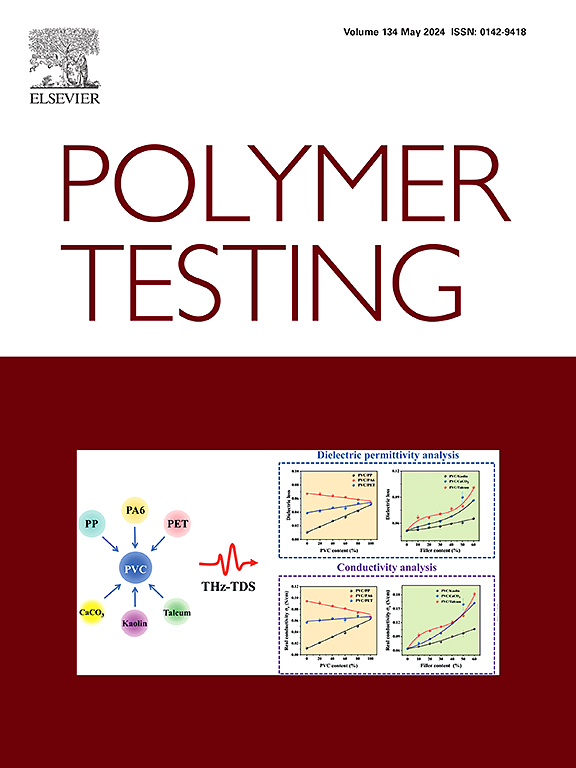Thermal annealing optimization for improved mechanical performance of PLA parts produced via 3D printing
IF 5
2区 材料科学
Q1 MATERIALS SCIENCE, CHARACTERIZATION & TESTING
引用次数: 0
Abstract
This study employs an integrated approach using Taguchi, ANOVA, and Grey Relational Analysis to optimize the mechanical performance of PLA parts produced via Fused Filament Fabrication through controlled thermal annealing. The analysis examines the effects of annealing temperature and time on tensile, flexural, compressive, and impact strengths, aiming to identify optimal post-processing conditions for improved material properties. Annealing temperatures ranged from 70 °C to 110 °C, and durations varied between 40 and 200 min. Key findings indicate that the most influential parameters were achieved at 90 °C for 120 min, yielding notable enhancements in tensile strength, flexural strength, compressive strength, and impact resistance. The Taguchi method identified optimal conditions for each mechanical property, with temperature emerging as the most influential factor. ANOVA analysis further quantified the contribution ratio of temperature and time, validating the Taguchi results and confirming that temperature accounted for most of the variation in mechanical performance. Differential Scanning Calorimetry supported these findings, showing increased crystallinity in PLA, thus highlighting the significant impact of optimized thermal annealing on enhancing 3D-printed PLA parts.
通过3D打印提高PLA零件机械性能的热退火优化
本研究采用田口、方差分析和灰色关联分析的综合方法,通过控制热退火来优化熔融长丝制造的PLA零件的机械性能。该分析考察了退火温度和时间对拉伸、弯曲、压缩和冲击强度的影响,旨在确定改善材料性能的最佳后处理条件。退火温度范围从70°C到110°C,持续时间在40到200分钟之间变化。主要研究结果表明,最具影响力的参数是在90°C下达到120分钟,从而显著提高了拉伸强度、弯曲强度、抗压强度和抗冲击性。田口法确定了每种力学性能的最佳条件,其中温度是影响最大的因素。方差分析进一步量化了温度和时间的贡献率,验证了田口的结果,并确认温度是机械性能变化的主要原因。差示扫描量热法支持这些发现,显示PLA的结晶度增加,从而突出了优化的热退火对增强3d打印PLA部件的显著影响。
本文章由计算机程序翻译,如有差异,请以英文原文为准。
求助全文
约1分钟内获得全文
求助全文
来源期刊

Polymer Testing
工程技术-材料科学:表征与测试
CiteScore
10.70
自引率
5.90%
发文量
328
审稿时长
44 days
期刊介绍:
Polymer Testing focuses on the testing, analysis and characterization of polymer materials, including both synthetic and natural or biobased polymers. Novel testing methods and the testing of novel polymeric materials in bulk, solution and dispersion is covered. In addition, we welcome the submission of the testing of polymeric materials for a wide range of applications and industrial products as well as nanoscale characterization.
The scope includes but is not limited to the following main topics:
Novel testing methods and Chemical analysis
• mechanical, thermal, electrical, chemical, imaging, spectroscopy, scattering and rheology
Physical properties and behaviour of novel polymer systems
• nanoscale properties, morphology, transport properties
Degradation and recycling of polymeric materials when combined with novel testing or characterization methods
• degradation, biodegradation, ageing and fire retardancy
Modelling and Simulation work will be only considered when it is linked to new or previously published experimental results.
 求助内容:
求助内容: 应助结果提醒方式:
应助结果提醒方式:


